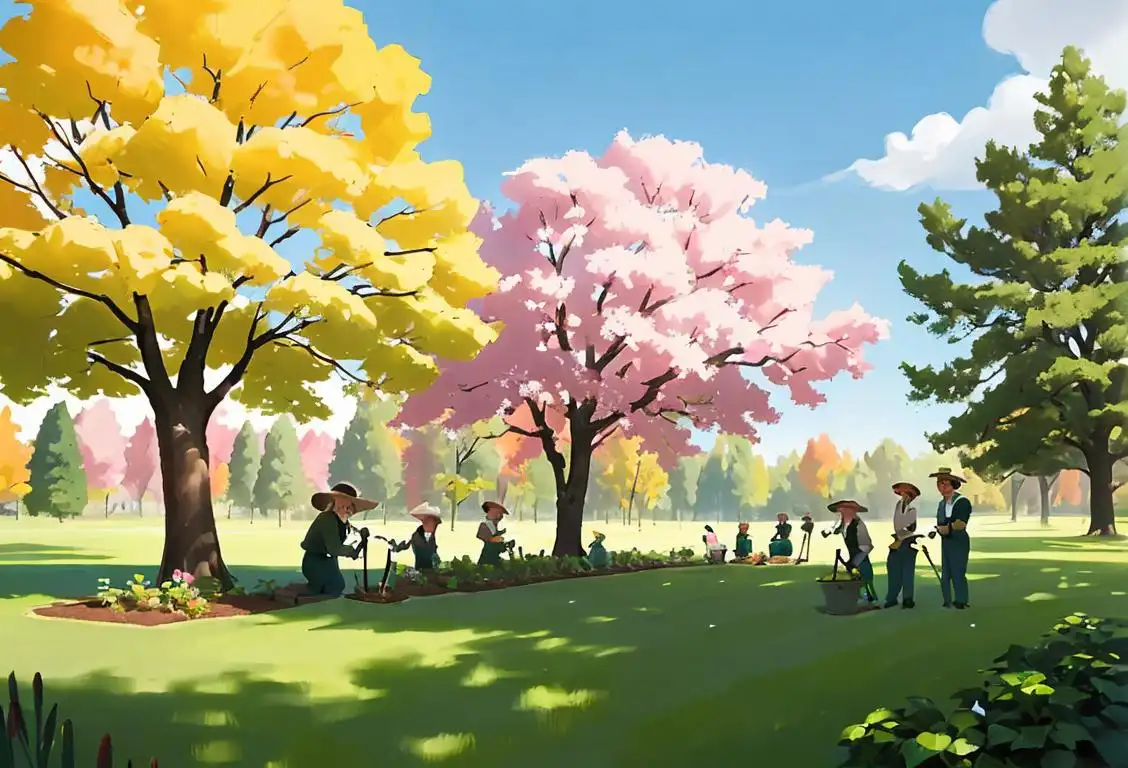National Meadow Day

Welcome to the fascinating world of National Meadow Day! Get ready to frolic through flowery fields and embrace the beauty of nature. It's time to dust off your hiking boots, grab a picnic blanket, and let's dive into the magic of meadows!
When is Meadow Day?
It's national meadow day on the 6th July.
The Origins of National Meadow Day
Did you know that meadows have been captivating human hearts since ancient times? From the traditional English countryside to the rolling prairies of America, meadows have always been a symbol of tranquility and serenity.
National Meadow Day was established to celebrate these picturesque landscapes and raise awareness about their importance. The day encourages people to explore meadows, learn about the diverse plant and animal life they support, and contribute to their conservation.
Whether you're strolling through wildflower meadows or taking a moment to appreciate the lush green grass on a sunny day, National Meadow Day is a reminder to cherish and protect these natural wonders.
How to Celebrate National Meadow Day
There are endless ways to enjoy National Meadow Day. Here are a few suggestions to get you started:
- Organize a picnic in a local meadow and indulge in some tasty treats while surrounded by beautiful scenery.
- Go on a nature walk with friends or loved ones and appreciate the flora and fauna that call meadows home.
- If you have a green thumb, consider planting native wildflowers in your garden to create a mini-meadow of your own.
No matter how you choose to celebrate, make sure to take plenty of photos and share them with the hashtag #NationalMeadowDay to inspire others!
History behind the term 'Meadow'
Old English period (450-1100 AD)
The early origins
The term 'meadow' has its roots in the Old English language, specifically the word 'mǣdwe'. In this early period, it referred to a piece of low-lying or moist grassland, generally found alongside a river or stream. Meadows were crucial for livestock grazing and also served as a source of hay for winter feed. They were important in sustaining the agrarian economy of the time and provided a valuable natural resource.
Medieval period (5th - 15th century)
The impact of feudalism
During the Medieval period, the concept of meadows became intertwined with the feudal system. The landed nobility held vast estates which included meadows. These meadows were often divided into strips and allocated to peasants for farming purposes. The peasants had to pay rent or provide labor to the lords in exchange for the use of the meadows. This relationship further solidified the importance of meadows as a resource for agricultural production.
Enclosure movement (16th - 19th century)
Transformation and privatization
The enclosure movement, which gained momentum in the 16th century, radically transformed the landscape and ownership of meadows. It involved the consolidation and privatization of common lands, including meadows, by wealthy landowners. The previously shared meadows were enclosed and converted into private property. This transition led to a significant restructuring of land ownership patterns and disrupted traditional agricultural practices.
Industrial Revolution (18th - 19th century)
Mechanization and meadow decline
The Industrial Revolution brought about sweeping changes in agriculture, leading to a decline in the significance of meadows. Improvements in machinery, such as the invention of the reaper and later the combine harvester, reduced the need for manual labor in harvesting crops. As a result, there was less demand for the hay and grazing provided by meadows. Increasing urbanization and industrialization further reduced the availability of meadows as land was repurposed for factories and housing.
Conservation movement (late 19th - 20th century)
Revival of appreciation
In the late 19th and early 20th centuries, a conservation movement emerged, which led to a renewed appreciation for meadows as valuable habitats. Naturalists and environmentalists recognized the ecological importance of meadows in supporting diverse plant and animal species. Efforts were made to preserve and restore meadows as part of conservation initiatives. Today, meadows are valued not only for their beauty but also for their role in biodiversity conservation.
Did you know?
Did you know that a meadow isn't just a pretty face? It's a biodiversity hot spot! Meadows provide habitats for a variety of plant species, insects, birds, and mammals. These vibrant ecosystems support a delicate balance of life, making them much more than just a scenic backdrop for picnics.Tagged
awareness fun natureFirst identified
4th July 2015Most mentioned on
6th July 2019Total mentions
145Other days
Penguin Day
Tree Planting Day
Arbor Day
Take A Walk In The Park Day
Turtle Day
Badger Day
Public Lands Day
Bat Appreciation Day
Squirrel Appreciation Day
Find A Rainbow Day









